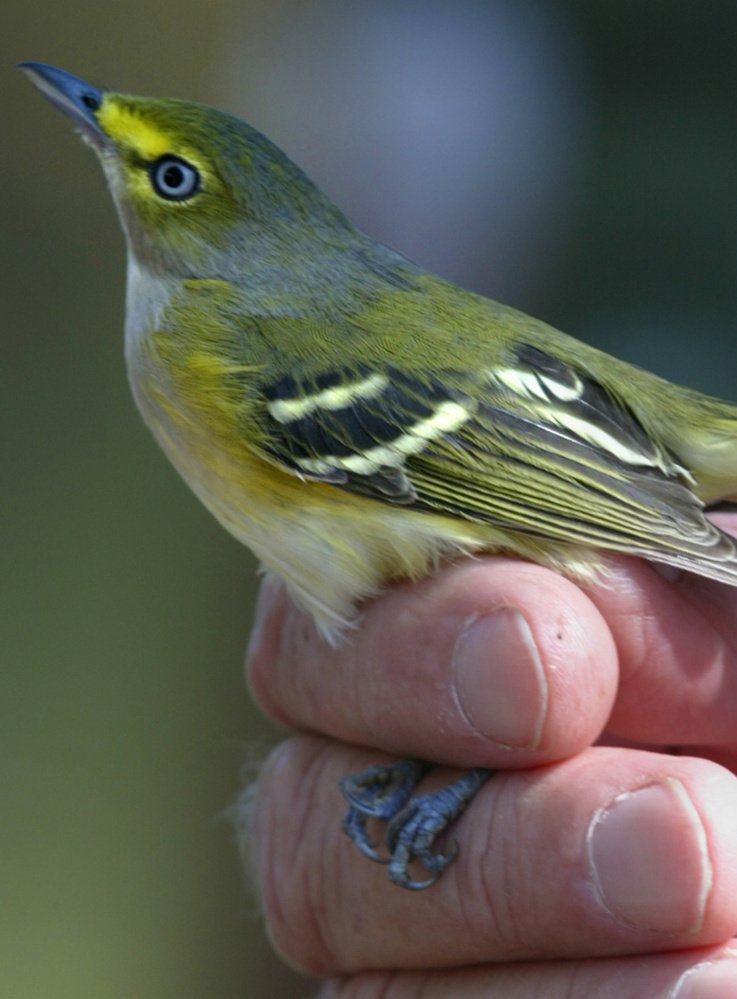Texas and Florida suffered the fury of Hurricanes Harvey and Irma in the past month. We immediately know the impact on humans and buildings after storms pass. But what is the effect on birds? How do birds weather the ferocity of a hurricane?
Our understanding of the behavior of birds during a hurricane is necessarily incomplete. No ornithologist is going to risk life and limb to try to make observations in the torrential rain and strong winds of a Category 4 or 5 hurricane.
Let’s first consider land birds. A land bird caught up in the winds of a hurricane is very likely to perish. Such a bird certainly cannot buck the wind to find safety. As a storm builds, land birds seek out shelter – perhaps a tree cavity, a small hole below a tree root, a dense thicket or a stout tree. These microhabitats provide effective refuges from the wind and rain.
How well do land birds survive hurricanes? The records from a bird banding station started in 2002 at a state park north of Orlando, Florida provide some heartening data. In 2004, three hurricanes hit central Florida (Charley, Francis and Jeanne) between Aug. 13 and Sept. 25 with winds up to 105 mph.
The banders compared the capture rates of five species (white-eyed vireo, tufted titmouse, Carolina wren, northern cardinal, eastern towhee) during the autumns of 2003, 2004 and 2005. They found no differences in capture between 2003 and 2004. A slight decrease was noted for all species except eastern towhee in 2005. The conclusion is that the bird populations at this site did not suffer any severe impacts. Pretty good for a triple punch.
A banding station in Puerto Rico provided baseline data to assess the impact of Hurricane Andrew in 1991. The project was designed to assess the abundance and population dynamics of understory birds in a tropical forest.
After Andrew passed, the capture rate of birds was higher than before the hurricane. The explanation is that many of the birds that frequented the canopy were forced to feed on the forest floor because of canopy damage.
Bird censuses in a number of habitats in Jamaica provided a serendipitous baseline for assessing the impacts of Hurricane Gilbert in 1988. Censuses taken shortly after Gilbert hit showed that total species and the species abundances had held steady. There was some inter-habitat movement related to selective destruction of habitats.
Our understanding of the impact of major storms on land birds is that most land birds weather the storms well by finding appropriate cover. The threat to bird survival is post-hurricane because of all the vegetation damage that hurricanes wreak. Some birds may perish because their altered habitats no longer provide the food they need. Others may disperse in search of suitable habitat. Such dispersal may explain the arrival in Florida of a number of Bahamian and Cuban birds this past April following last year’s damage to these islands by Hurricane Matthew.
For migratory birds, we need to keep the connectedness of wintering, migratory and breeding habitat in mind. Tropical hurricanes can reduce the density of migratory breeding birds here in Maine.
Seabirds and coastal birds have no places to hide during a hurricane. Most are expert fliers but have little recourse except to be carried along by hurricane winds. As a result, pelagic birds often end up in strange places after a hurricane.
Hurricane Sandy in 2012 followed an unusual track, moving from the eastern seaboard northwest to Lake Ontario. Birders there following the hurricane must have thought they had been transplanted to the ocean.
Here’s a list of some of their vagrant species: Wilson’s storm-petrel, Leach’s storm-petrel, black littiwake, pomarine jaeger, long-tailed jaeger and razorbill.
It’s always worth birding after a storm to see what the winds may have brought in.
Herb Wilson teaches ornithology and other biology courses at Colby College. He welcomes reader comments and questions at
whwilson@colby.edu
Send questions/comments to the editors.



Success. Please wait for the page to reload. If the page does not reload within 5 seconds, please refresh the page.
Enter your email and password to access comments.
Hi, to comment on stories you must . This profile is in addition to your subscription and website login.
Already have a commenting profile? .
Invalid username/password.
Please check your email to confirm and complete your registration.
Only subscribers are eligible to post comments. Please subscribe or login first for digital access. Here’s why.
Use the form below to reset your password. When you've submitted your account email, we will send an email with a reset code.